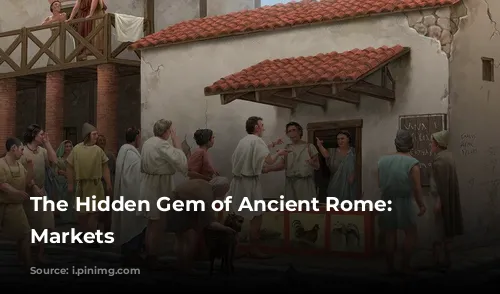Imagine stepping back in time, walking through bustling streets filled with vendors selling exotic goods from far-flung corners of the Roman Empire. This wasn’t just a fantasy, it was reality in the heart of Rome, at the Trajan Markets.
These ancient shopping malls were the brainchild of Emperor Trajan, who envisioned a place where Romans could buy, sell, and connect.
Ancient Mall, Modern Marvel
The Trajan Markets are a sprawling complex of ruins, a stone’s throw from the iconic Colosseum and Roman Forum. Nestled between the Quirinal Hill and the forum valley, these multi-level structures were designed with both commerce and administration in mind.
The markets were more than just a place to buy goods. They were a bustling hub of activity, showcasing the reach and influence of the Roman Empire.
A Glimpse into the Past
Trajan Markets were meticulously planned, boasting two distinct sections, an upper and lower level, with a total of six levels interconnected by alleys and stairs. The upper level housed administrative offices, while the lower level was a vibrant marketplace where Romans could browse a variety of goods, from exotic spices to handcrafted pottery.
Built by the renowned architect Apollodorus of Damascus, the markets’ distinctive semi-circular shape bears a striking resemblance to the ancient market of Petra in Jordan. It’s no surprise, as Apollodorus was himself born in the region and was deeply familiar with the local art and architecture.
Time’s Legacy
Over the centuries, the Trajan Markets have seen many transformations. They were turned into a fortress, a cloister, and later into barracks, before finally being preserved as the Roman Forum Museum.
Today, visitors can explore the Trajan Markets and witness a captivating blend of architectural styles, beautiful decorations, and exquisite sculptures. The museum hosts fascinating exhibitions, showcasing the grandeur and ingenuity of ancient Roman craftsmanship.
A Must-See for History Buffs
The Trajan Markets are open every day from 9:30 AM to 7:30 PM, except for bank holidays. Getting there is easy, with a nearby subway stop on line B, a short walk from the Colosseum along the Fori Imperiali street.
Tickets can be purchased both online and at the ticket office, and a visit typically lasts between one and two hours. Despite being a remarkably well-preserved historical site, the Trajan Markets are not as crowded as other popular attractions, making it a serene escape from the hustle and bustle of Rome.
If you’re interested in delving deeper into the history of these remarkable markets, a guided tour is highly recommended. A knowledgeable guide can unravel the secrets of the Trajan Markets, revealing hidden details and fascinating stories that bring the past to life.
So, whether you’re an avid history buff or simply looking for a unique experience in Rome, the Trajan Markets should definitely be on your list. Prepare to be amazed by this ancient gem, a timeless testament to the grandeur and ingenuity of the Roman Empire.
